
Recovering from surgery or anesthesia is more than just resting and waiting for your body to heal itself. It's also about being vigilant about potential complications, among which blood clots stand out as a notable concern. These pesky clots can form undetected, sometimes leading to serious health issues.
The good news is, there's an arsenal of strategies you can deploy to minimize this risk. From getting the right kind of movement to paying attention to what you eat and drink, these elements all play a crucial role. In this read, we'll explore the reasons why clots form and take a detailed look at what you can do to keep your recovery on track.
- Understanding Blood Clots During Recovery
- Role of Physical Activity in Prevention
- Dietary Considerations and Hydration
- Medical Interventions and Monitoring
Understanding Blood Clots During Recovery
As you embark on the road to recovery after surgery, you may hear a lot about the risk of blood clots. But what exactly are they, and why should you be concerned? Blood clots are gelatinous clumps of blood that have changed from a liquid to a partially solid state. When these clots form inside a vein — particularly in the deep veins of the legs — it's known as deep vein thrombosis, or DVT. The risk with DVTs is that they can dislodge and travel to the lungs, causing a potentially life-threatening condition known as a pulmonary embolism.
Postoperative patients are particularly prone to blood clots for several reasons. For one, surgery often involves tissue injury, which naturally activates the clotting system in an attempt to prevent excessive bleeding. Furthermore, anesthesia can sometimes lead to prolonged periods of immobility during and after surgery, which stifles blood circulation. Reduced movement post-surgery further contributes as muscles contract less frequently, affecting the natural blood flow.
Age, weight, and certain medical conditions can also increase the risk of clot formation. Individuals over the age of 60, those with a history of clots, or those who are obese are at higher risk. Additionally, conditions like cancer or inflammatory bowel disease can increase this risk. It's interesting to note that, according to the Centers for Disease Control and Prevention, as many as 900,000 people in the United States are affected by venous thromboembolism annually.
"Blood clots during recovery are a silent threat - often preventable with the right steps," says Dr. Andrea Cole, a leading cardiothoracic surgeon.
To understand blood clots in detail, it's useful to visualize their formation as a defense mechanism gone awry. The same process that stops cuts from bleeding out paradoxically endangers the healing body when deployed in the absence of actual bleeding threats. That’s where the body’s regulatory mechanisms come into the spotlight, often requiring a balance between blood’s coagulation and anticoagulation pathways, which can be disturbed post-surgery. Doctors sometimes prescribe anticoagulants or blood thinners to help maintain this balance during recovery.
Recognizing the symptoms of a clot forms an essential part of post-surgery care. Leg pain or tenderness, often starting from the calf, along with swelling, redness, or warmth, can signal DVT. If you experience sudden breathlessness, chest pain, or coughing up blood, seek immediate medical attention as these may be signs of a pulmonary embolism. Early detection and treatment greatly enhance the ability to manage and negate the serious consequences of blood clots.

Role of Physical Activity in Prevention
Physical activity is a key player in the battle against post-surgical blood clots, and it might be more crucial than many people realize. When you're nursing yourself back to health after experiencing anesthesia recovery, movement becomes essential because it helps in keeping the blood circulation efficient and reduces the chances of clotting. Your muscles act as pumps when they contract, pushing blood through your system and keeping it from pooling in any one area. This is especially true for your legs, where clots are most inclined to develop. It’s a bit like shaking a bottle to ensure nothing settles, keeping everything distributed evenly.
Being previously bedridden or experiencing long periods of immobility can heighten the risk, which is why light activity post-surgery often becomes a part of your doctor's recommended care plan. Walking short distances is often encouraged, and it doesn’t require much effort to start seeing the benefits. As your body gets back in gear, try incorporating gentle stretching and mobility exercises. These low-impact movements help not only in promoting blood flow but also in speeding up the recovery process itself. A popular quote by Dr. Michael Roizen highlights, "Ten thousand steps a day keep the doctor away more than an apple ever did."
For those concerned about too much exertion, worry not, as your body will signal when enough is enough. Listening to those signs is critical. If walking independently seems overwhelming, consider deep breathing exercises and light calf raises, which can be performed while seated. These exercises also play a fundamental role in maintaining circulation. Enlisting the support of a physiotherapist is another excellent strategy, as they can tailor activities to match your recovery pace.
The Connection Between Exercise and Health
Regular exercise doesn’t just help with immediate recovery; it also builds a healthier body for the future. Committing to consistent movement contributes vastly to maintaining a healthy heart, fortifying against the risks beyond your current convalescence. According to a study by the American Heart Association, moving at least once an hour has been linked with a lowered risk of developing deep vein thrombosis (DVT) by over 50%.
The approach doesn't have to be overwhelming. It often starts with setting simple goals, such as standing up and stretching every 15 minutes or making minor adjustments in your daily routine like choosing stairs instead of the elevator. From there, you can continue building momentum by increasing both the time and intensity of your activities gradually. Significant changes often begin with seemingly modest steps.
- Begin with light walking, around your room or in the hallway.
- Incorporate light stretching or yoga, focusing on flexibility.
- Try gentle cycling or swimming when given clearance by your healthcare provider.
- Utilize in-bed exercises like foot pumps or knee bends when required.
The objective is to integrate movement into your routine that feels comfortable and fits your body's present needs. Remember that while physical activity is a powerful tool, it must be approached with a balance of perseverance and patience. Prioritizing gradual, manageable motions over abrupt shifts guarantees sustainability without jeopardizing your well-being. Soon, with these efforts, you’ll start experiencing the holistic, fortifying impact physical activity extends to every layer of your life.
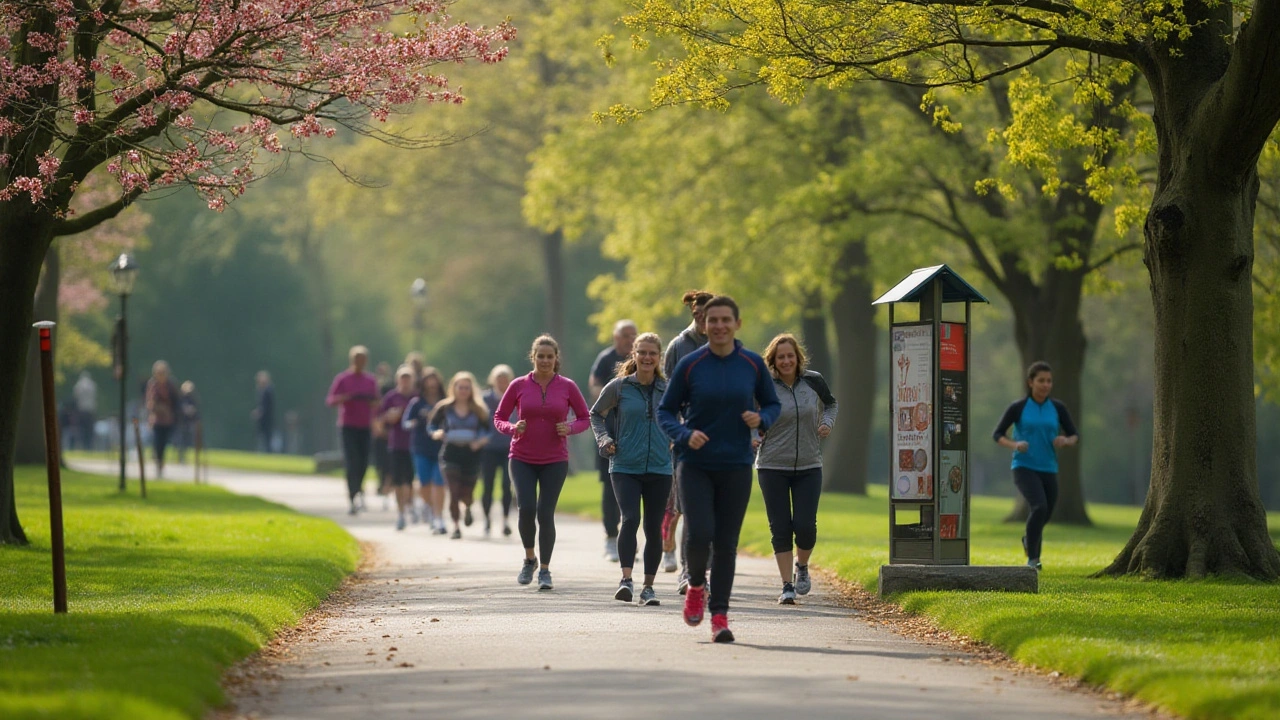
Dietary Considerations and Hydration
When you're on the mend after surgery, considering dietary choices is essential in circumventing potential complications like blood clots. Proper food and drink can have a profound effect on your recovery trajectory. For starters, maintaining a balanced diet rich in fruits, vegetables, lean proteins, and whole grains ensures you get the vitamins and minerals necessary for healing. Particularly, foods high in Vitamin E, such as almonds, spinach, and sweet potatoes, offer anti-clotting properties that can be beneficial. It's not just about what you do eat, but also what you should moderate. Excessive salt and sugar, as they can lead to dehydration and poor circulation, are top of the list to watch for, which could potentially increase clot risks.
Hydration deserves as much attention as your meals. Keeping a steady flow of fluids in your system aids in maintaining blood volume and pressure, which together play a part in preventing clot formation. Aim to drink water consistently throughout the day rather than large amounts at once, facilitating better absorption and reducing strain on your kidneys. Decaffeinated tea or herbal infusions are good alternatives to caffeinated drinks, which can sometimes contribute to dehydration. Meanwhile, if you're supplementing with drinks like fruit juices, particularly those rich in Vitamin C like orange juice, you’ll find they not only hydrate but help increase iron absorption, important for those who have experienced bleeding during surgery.
Beneficial Nutrients
Let's delve into some specifics regarding nutrients. Omega-3 fatty acids, largely discovered in fatty fish like salmon and mackerel, are renowned for their ability to reduce blood clotting through biochemical pathways. Adding flaxseeds or walnuts to your diet is a plant-based route to these benefits. It's intriguing how our body's chemistry responds to minor dietary tweaks, often in profound ways. Notably, fiber-rich foods can promote better digestion while reducing cholesterol levels which indirectly might lower the risk of clotting.The Role of Consistency
Consistency is key when it comes to diet and hydration. Sudden changes or irregular intake can confuse your body’s systems, sometimes leading to adverse responses. Try to set a regular eating schedule, complimented by a reliable hydration routine. If this sounds challenging, consider using technology - an app or connected device can offer reminders and tracking, enabling better compliance. As an added bonus, adhering to consistent habits often aligns with quicker, smoother recoveries, reducing stress on your body as it heals. After all, taking measures to actively participate in your recuperation is a crucial step towards a healthy future post-surgery."Proper nutrition is the difference between feeling exhausted and feeling energized when recovering from surgery," says Dr. Amanda Thompson, renowned nutritionist. "Tailor your meals not just for taste but for purpose."
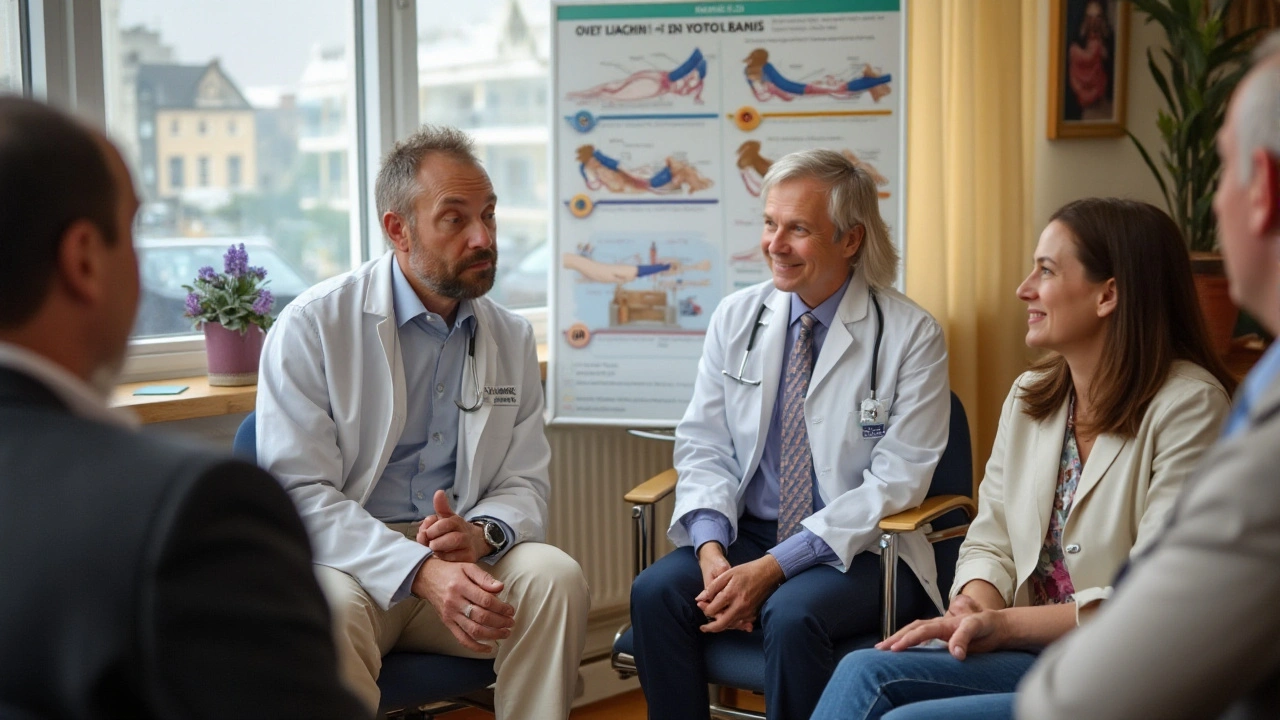
Medical Interventions and Monitoring
After surgery, keeping a close eye on your health is an absolute must. Especially when it comes to preventing blood clots, medical professionals play a critical role by employing a wide range of strategies. One of the foremost interventions is the administration of anticoagulant medications. These are often referred to as blood thinners, although they don't actually 'thin' the blood. Instead, they work to decrease the blood's ability to form dangerous clots. Yet, it's not a one-size-fits-all solution; the specific anticoagulant prescribed might vary depending on individual health factors. Balancing the dosage to minimize clot risk while avoiding excessive bleeding is crucial.
But medication isn't the sole play in this domain. Advanced compression devices are often used as another line of defense. These devices wrap around your legs to regularly squeeze them, mimicking the natural action of walking and promoting circulation. Many hospitals integrate these into post-op care as a standard practice to manage anesthesia recovery. Repeated, gentle pressure helps prevent the stagnation of blood in the veins, which can be a precursor to clot formation. Surgeons might also discuss the option of inferior vena cava filters, especially with patients who have a history or high risk of clots. These small devices can be placed inside the veins to capture potential clots before they reach the lungs or heart, though they're typically reserved for specific high-risk cases.
"The key to avoiding blood clots is consistent monitoring and a proactive approach," reminds Dr. Lisa Stone, a vascular specialist. "Communicate openly with your healthcare team about any concerns you might have."
Using tools to measure and monitor progress and health indicators is another vital aspect of post-op care. Technologies have rapidly evolved, providing wearable electronics that can track heart rates, blood pressure, and more from the comfort of your home. While not a direct measure of clotting, these devices can provide crucial insights into your recovery's pace, detecting issues that may not be immediately obvious. Regular follow-up visits with healthcare providers ensure the continued assessment of these risk factors, adjusting care plans as you heal. Never underestimate the value of these check-ups; they become checkpoints that help catch any anomalies early.
Interestingly, research has shown that personalized monitoring plans can substantially mitigate clot risks. In one study, patients who adhered to a structured, individualized post-operative care plan saw a significant reduction in incidents of blood clots by nearly 15%. This involves tailoring post-op activities, medication doses, and monitoring schedules to each person's unique needs. While the general guidelines provide a framework, it's these personalized plans that often make the most striking difference. This bespoke approach empowers patients, giving them a sense of agency over their recovery, which doesn't just help physically but mentally prepares them, fostering a more positive recovery outlook.
8 Comments
Manvika Gupta
January 24, 2025 AT 12:46 PM
i live in india and my grandma had hip surgery last year. she didnt move for 3 days cause family thought rest = good. she got a clot. we learned the hard way. now she does foot pumps while watching tv. small things matter. dont ignore the calf raises. seriously.
Hobert Finn Bodfish
January 25, 2025 AT 04:34 AM
LMAO you people are overcomplicating this. Move your legs. Drink water. Dont sit like a sack of potatoes. If you need a 10 page article to understand that, maybe you shouldn't be left alone after surgery. Also, compression socks are not optional. They're not 'nice to have.' They're medical equipment. Stop treating them like fashion accessories. 🤦♂️
Andrea Galetto
January 25, 2025 AT 23:35 PM
Hydration is not a suggestion it is a biological imperative. If you are drinking anything with sugar or caffeine you are not hydrating you are diluting your bodily fluids with industrial byproducts. Water is free. Your lungs are not. Drink it.
Daniel Rogers
January 26, 2025 AT 04:19 AM
you got this!! 🙌 every step counts even if it's just from the bed to the chair. i did 3 laps around my living room on day 2 after my appendix surgery and cried because it felt like a marathon. now i'm hiking. you're stronger than you think. keep going 💪
Chris Remo
January 26, 2025 AT 16:04 PM
my doc told me to walk 5 minutes every hour. i set a timer on my phone. did it for two weeks. now i dont even think about it. just stand up. stretch. walk. repeat. it becomes habit. no big deal. but it stops clots. and honestly? it stops the boredom too. you dont need to run a marathon. just move.
Michael Herr
January 27, 2025 AT 12:20 PM
the compression devices at the hospital were uncomfortable but i did not complain. i had a 4 hour surgery and my legs were numb for 12 hours after. if those machines kept me from a clot then they were worth every second of discomfort. listen to the nurses. they know what they are doing
Crystal Magnant
January 28, 2025 AT 11:24 AM
just wanted to say thank you for this. i read it while recovering at home. i was scared. now i feel like i have control. also i bought those cute compression socks with flowers on them. yes i am a grown woman who owns patterned medical socks. and i am proud of it 🌸


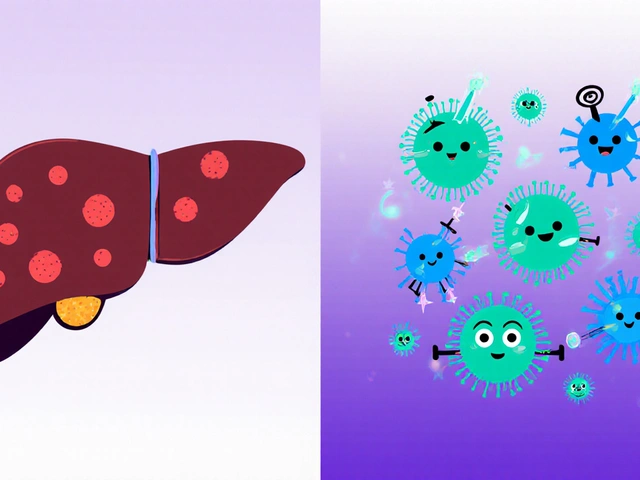

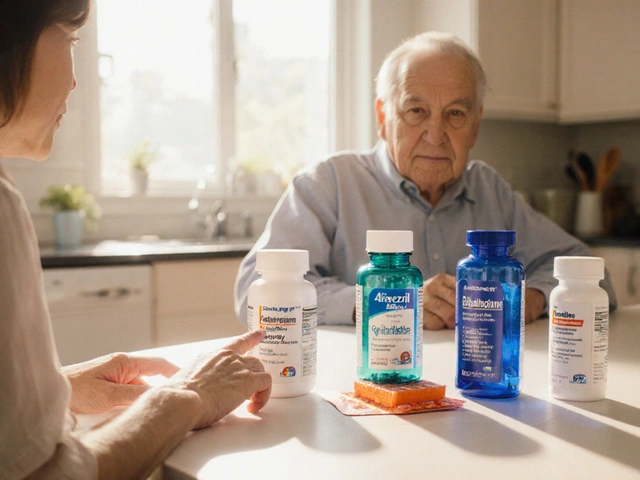
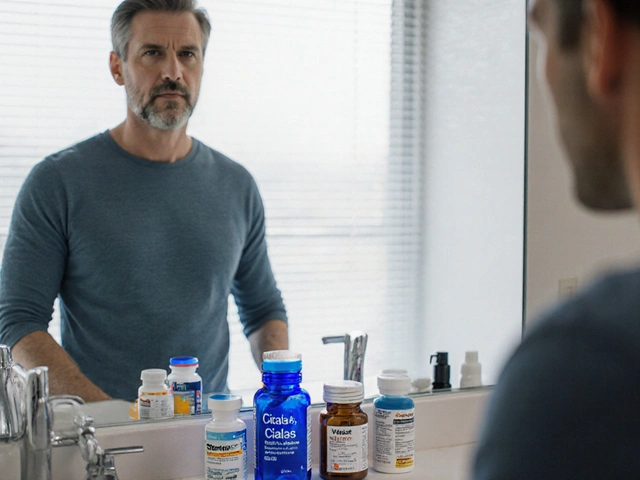
Chloe McDonald
January 23, 2025 AT 18:03 PM
just got out of knee surgery last week and this post saved my life honestly. started walking around the house every hour like they said and my legs dont feel like concrete anymore. also drinking way more water than usual and i swear i feel lighter. thanks for the simple tips!